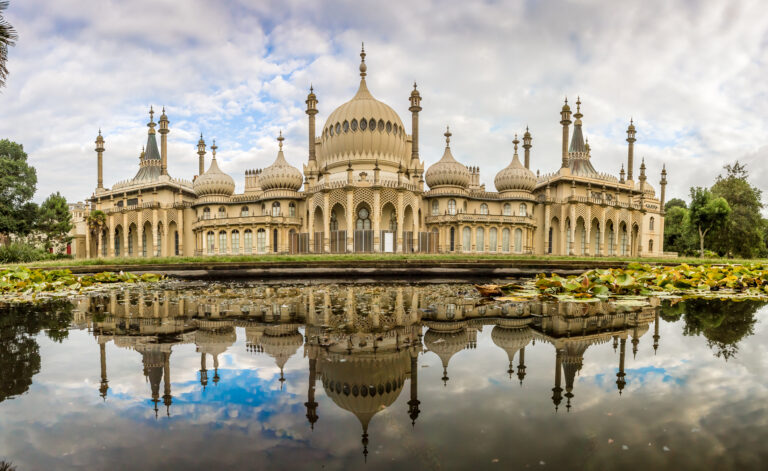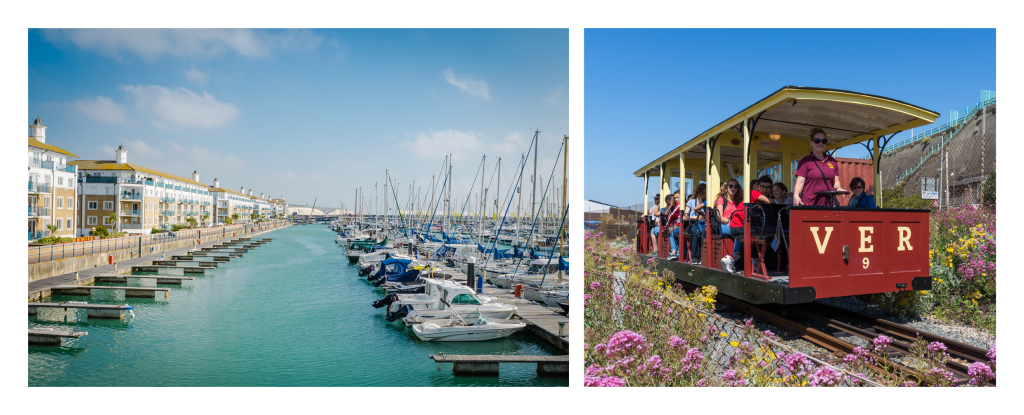Past, Present and maybe Future – Brighton
A glittering sea is the backdrop to the hustle and bustle that greets your arrival on Brighton seafront.
Bars and cafes litter the promenade where thirsty tourists and locals bask in the sun while sipping their favourite
cocktail or coffee.
At the Marina, the largest in the UK, boats bob back and forth in the harbour as people browse the chic boutiques,
galleries and eateries overlooking the water.
Tourists can then ride the 140-year-old Volk’s Electric Railway – the oldest in the world – to travel along the seafront
towards the Brighton Palace Pier.
With its rollercoasters and arcades, the pier is a favourite with families. Once walking past it, one of the newer
attractions to dominate the skyline comes into view – the i360.
Opened in 2016, the 531ft tall tower gives sightseers the best possible view of the city with a 360 degrees ascending
and descending viewing platform.
Overlooking the seafront are several historic hotels. The Hilton Brighton Metropole, built in 1890, features everything
you need to enjoy a break, including a pool and spa.
Nearby sits Grand Hotel – infamous for the site of an assassination attempt on Margaret Thatcher in 1984 by the IRA,
when a bomb went off during Conservative party conference.
Hidden behind the waterfront buildings lies a labyrinth of narrow alleyways and squares known as The Lanes.
Originating as a small fishing town called Brightelmstone in the 16th Century, the Lanes now features a host of
restaurants, quaint tea rooms, legendary jewellers, antiques shops and plenty more hidden treasures.
If you do manage to find your way out of the maze of streets, a short walk northwards up Old Steine will take you to
one of the most iconic buildings in the whole city – the Royal Pavilion.
The imposing structure with its Indian style was once a summer house for King George IV in the late 18th Century,
before being transformed into a military hospital for Indian soldiers fighting in WW1.
Today, people can be transported back in time by walking through the building, enjoying the numerous art exhibitions
or visiting the Brighton Museum. A trip to the Pavilion’s beautiful garden is also not to be missed – particularly when
the sun’s out.
The Royal Pavilion sits on the outskirts of the North Laine neighbourhood, one of the creative hubs of the city.

Independent restaurants, pubs, cafes and shops fill the streets which are often closed off to traffic to allow for local
traders to set up stalls.
Colourful street art that even Bansky would be proud of adorns many of the buildings while street performers are a
mainstay.
The city’s buzz and energy also comes from its two universities situated on its outskirts in Falmer – Brighton and
Sussex.
Surrounding them sits the stunning South Downs National Park with its beautiful walking routes that offer glimpses
across the whole city.
On Saturdays, walkers will likely hear the roar of 30,000 football fans packed into Brighton and Hove Albion’s nearby
Amex Stadium – who’ll be playing European football for the first time in their history next season.
From the city’s fascinating history and art scene to the shopping, eateries and seafront activities – Brighton has
something for everyone.

